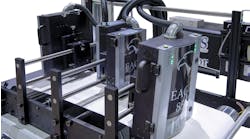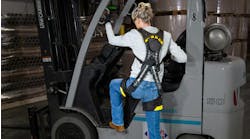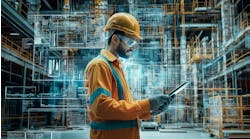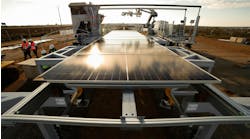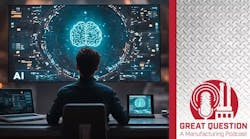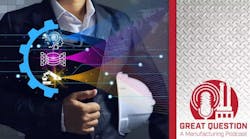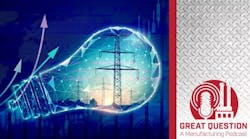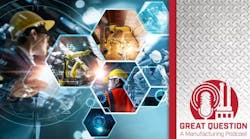Automation and digital transformation have forever changed the way companies do business. The first use of these technologies allowed businesses to capture their operations from an entirely new perspective—completely autonomously—without ever putting workers in harm’s way. The next wave enabled these businesses to use that data more efficiently, amplifying a company’s potential, resulting in better business decisions. But now we’re entering a new era—the automation of the physical world, enabled by robots.
At DroneDeploy, we’ve already seen customers in construction, energy, and agriculture begin to execute on this vision to automate their businesses in three phases:
- Automatically capturing data with aerial and ground robots
- Data annotation and analysis automated by machine learning
- Robots will autonomously act on data-driven decisions
While many companies are taking advantage of automated data capture, many more view phases two and three as the crucial phases for their business to gain a competitive advantage.
Phase 1: Automating Data Capture
Data has always been critical to businesses, but the methods used to capture it have evolved rapidly. A few decades ago, farmers counted and dated their crops by hand, and energy engineers scribbled down gauge readings. Since then, data capture has progressed in leaps and bounds with the help of computers, mobile devices, cloud-based storage, and IoT sensors. But you can’t put an IoT device into every plant or every brick. To put it simply: you can’t manage what you can’t measure. The measurement of physical industries remains a challenge, and much of it is unmeasured.
In recent years, drone data capture has changed this. Drones provide businesses with a way to document sites in a matter of minutes. With drone software, aerial imagery can be captured and compiled into 3D models. Companies can also calculate 3D measurements like volume and track changes to an environment over time, measuring every aspect.
The next frontier is ground robotics. Many businesses are now seeking to complement their drone programs with unmanned rovers or quadrupeds like Spot from Boston Dynamics. These versatile robots can explore confined spaces that drones cannot. Equipped with high-definition cameras, LiDAR or thermal sensors, they can be used for a wide range of applications across dozens of industries.
The benefits of combining aerial and ground robots for data capture are profound. Businesses can reduce the time and cost of inspections, document sites accurately, keep clear visual records of projects, and keep human workers out of harm’s way. With over 400,000 commercial drones active in the US, and rising popularity in ground robotics, it's no surprise that we see businesses invest in these areas. But the really fascinating phases are still to come.
Phase 2: Automating Data Analysis
Once businesses capitalize on robots to automate data capture, the next task is sorting and annotating that information. The goal is to turn abstract measurements into valuable business insights and determine work that needs prioritization. For example, suppose you’re an agronomist using drones to capture thousands of images of a fruit orchard. These images are uploaded to a centralized system and automatically sorted by time and location. But you still have to manually view the images to count the fruit and judge their ripeness—hardly practical when your drones capture thousands of images a day.
This pain point is where artificial intelligence lends significant value. AI-driven software can recognize the number of fruits and annotate the images accordingly. An advanced algorithm can even detect their size, shape, and color to determine ripeness. The robot then sends an alert letting the farmer know how much of their crop is ready for harvest.
Let’s look at another industry. Say Spot the robot is inspecting an energy plant. It takes a photo of an analog pressure gauge. The image of the gauge would need to be interpreted by a human. But with machine learning software, Spot could recognize the analog reading and convert it to a digital value. Spot could even alert operators if the reading were outside of a normal range. In the next five years, we’re confident we’ll see more enterprises using artificial intelligence or machine learning to automate these processes.
Phase 3: Automating Data-Driven Actions
Once businesses have automated data capture and analysis, the next task is acting on this information. In the previous scenario, Spot alerted a human operator about the abnormal gauge reading.
But what happens next? In normal circumstances, the operator would send a human engineer to fix the problem. Detection is automated, but the solution is still manual.
Imagine this instead: Spot not only detects the problem but also fixes it by performing a temporary shutdown and turning a valve to release the pressure. Shortly afterward, Spot repeats the inspection to check that levels have returned to normal. The situation has been resolved without human intervention. All three tasks (data capture, analysis, and action) have been entirely automated.
There are already basic examples of this happening in the field. Some agriculture companies are using robots to find and recognize weeds using machine learning. The robots spray the weeds and a week later recheck the plants. It's a closed-loop that operates without human intervention. And while these scenarios may sound like sci-fi, it's where industries are headed in the next ten years.
As machine learning and robotics technologies mature, we'll see increased automated actions and a more fantastic range of decision-making scenarios. Different types of robots will interact with each other intelligently across each business, adapting to changing conditions.
Eventually, we're also likely to see the emergence of fully operational digital twins. These will be realistic 3D visualizations of business environments, such as construction sites, energy plants, or agriculture fields. Employees will be able to watch via screens as robots go about their daily routines on-site—inspecting equipment, building structures, or planting and harvesting crops—meaning they'll seldom have to set foot on-site. It will also pave the way for interesting new career paths and more strategic roles for workers.
As you can see, it's an exciting time to be involved in robotics—we're on the cusp of a revolution that will reshape the world of work. Over the next decade, we'll unlock profound robotic capabilities and amplify every worker's potential, improving the accuracy at which you work.
